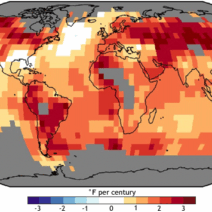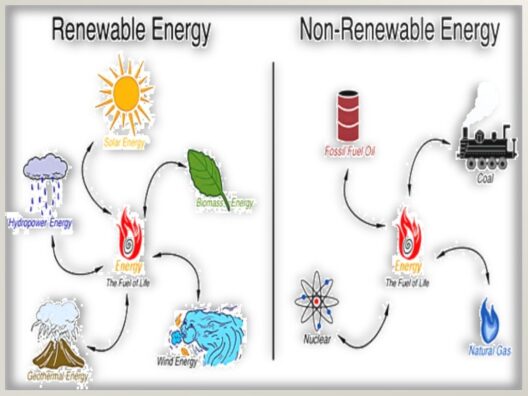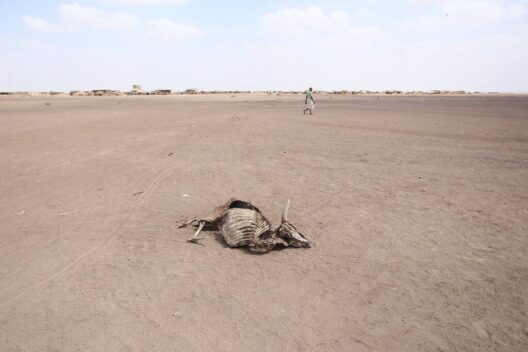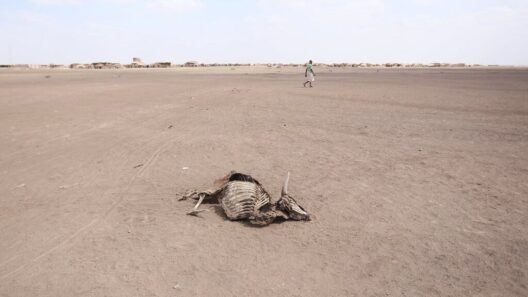Global warming is no longer a distant specter haunting the future; it is a palpable reality that is reshaping our planet in ways we are only beginning to comprehend. As temperatures rise and glaciers melt, the earth’s land masses are experiencing unprecedented transformations. From shifting coastlines to the emergence of new land forms, the consequences of climate change are both dramatic and far-reaching. This article delves into the intricate relationship between global warming and the evolution of continents, exploring how these changes are indicative of a world in flux.
The phenomenon of land mass alteration is intricately linked to the melting of polar ice and glaciers. As ice sheets recede, they release vast quantities of water into the oceans, causing sea levels to rise. This inundation is not uniform; instead, it varies significantly depending on geographical and geological factors. Coastal regions, particularly, are experiencing amplified erosion, submergence, and habitat loss. The coastlines of nations are becoming increasingly precarious, pushing communities to adapt or relocate. The displacement of populations due to flooding is a grim reality that cannot be ignored.
A pertinent example of land mass in flux can be found in Greenland, where the Greenland Ice Sheet has been retreating at an alarming rate. Recent studies indicate a rapid acceleration in ice loss, contributing approximately one-third of the global sea level rise. As a result, previously unexposed terrains are gradually becoming visible, presenting both opportunities and challenges. The newly exposed lands are potentially ripe for exploration and resource extraction, yet they also serve as a stark reminder of climate change’s costs. Ecosystems that have remained undisturbed for millennia are suddenly facing the onslaught of human encroachment.
Moreover, the melting of glaciers contributes to the release of ancient carbon deposits trapped beneath the ice. This process accentuates the greenhouse effect, further exacerbating global warming. It is a vicious cycle; as temperatures continue to rise, more ice melts, releasing additional carbon and driving the planet into an even hotter future. The feedback loops inherent in this system of environmental change warrant careful study and reveal the imperative need for comprehensive mitigation strategies.
As we scrutinize the geographical metamorphosis brought about by climate change, it is essential to acknowledge the role of tectonic activity. While processes like plate tectonics have historically reshaped continents over millions of years, climate change is accelerating some of these transformations. For instance, glacial isostatic rebound—a phenomenon where land previously compressed by heavy ice sheets begins to uplift—can lead to the emergence of new land forms and alter existing terrestrial structures. This process could potentially create new habitats while simultaneously disrupting established ecosystems.
Additionally, the effects of warming climates are felt far beyond the poles. In regions such as the tropical zones, increased temperatures lead to intensified weather patterns and the subsequent erosion of coastlines. Storm surges, hurricanes, and tidal actions are becoming more severe, resulting in the alteration of shorelines and the migration of estuarine systems. These changes pose challenges for local biodiversity, agriculture, and human infrastructure, necessitating adaptive measures.
Transitioning from erosion to sediment deposition, the dynamics of rivers are also influenced by climate change. As glacial run-off increases due to melting, sediment transport within rivers adjusts accordingly. This can lead to the formation of new deltas or the expansion of existing ones. The Mississippi River Delta, for example, is undergoing both land loss and land-building due to an intricate interplay of factors, including sediment supply, sea level rise, and human intervention. Each of these transformations is a testament to how interconnected our natural systems are and how climate change is a catalyst for complex changes in landscapes.
Furthermore, rising temperatures are contributing to permafrost thawing, particularly in the Arctic region. This thawing is significant for a myriad of reasons, not least of which is the release of methane, a potent greenhouse gas. As permafrost gives way, it reveals ancient ecosystems once draped in ice. The disruption of these delicate environments can have profoundly negative effects on the flora and fauna that inhabit them. New species dynamics will emerge, and many species face the threat of extinction as their habitats no longer support their survival.
In examining the continental shifts resulting from global warming, social and economic dimensions must also be considered. The realignment of land masses inevitably brings forth geopolitical implications. For example, nations may vie for access to newly accessible Arctic routes or resources released by melting ice. The competition for these assets could lead to conflict or cooperative ventures between nations. Thus, the implications of altered land masses extend beyond environmental issues to encompass politics, economics, and global relations.
In conclusion, the landscape of our planet is changing rapidly as a direct consequence of climate change. The effects—ranging from rising sea levels and erosion to the emergence of new landforms—underscore the pressing need for awareness and action. A thorough understanding of these transformations is not just important for environmentalists; it is essential for all those who inhabit this planet and share its resources. To address the complexities of a world in flux, a shift in perspective—harnessing curiosity and fostering engagement—is imperative. By recognizing the intricate interplay between climate change and land masses, society can better prepare for the future while striving to safeguard the delicate balance of our natural world.







